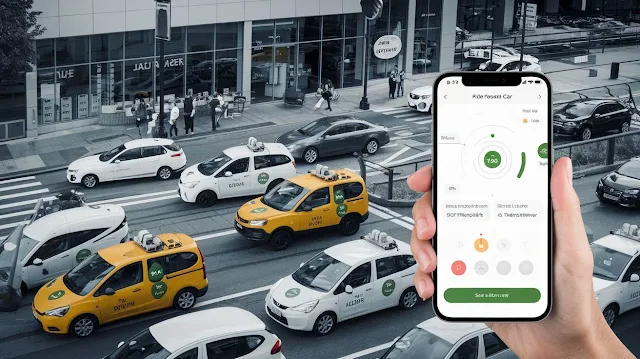The Rise of Ride-Sharing Services and Their Impact on Car Sales
A Paradigm Shift in Transportation and Consumption
In recent years, the transportation landscape has witnessed a significant transformation with the advent of ride-sharing services. Companies like Uber, Lyft, and others have revolutionized the way people move from one place to another. This revolution, driven by the convenience of app-based platforms, has raised an intriguing question: what impact do these ride-sharing services have on traditional car sales? In this article, we explore the rise of ride-sharing services, their influence on consumer behavior, and the potential long-term effects on the automotive industry.
The Convenience Revolution: Rise of Ride-Sharing Services
Ride-sharing services have disrupted traditional transportation models by providing users with a new level of convenience. The ability to summon a ride with a few taps on a smartphone has not only reduced the hassle of waiting for taxis but has also made car ownership less essential for many urban dwellers. With competitive pricing and the promise of quick pickups, these services have attracted a significant customer base that ranges from daily commuters to occasional travelers. This convenience-centric model has led to a shift in the way people perceive mobility, questioning the necessity of personal vehicle ownership.
Changing Consumer Behavior: From Ownership to Access
The rise of ride-sharing services has prompted a shift in consumer attitudes towards car ownership. As ride-sharing becomes more accessible and economical, some individuals are opting for access to transportation rather than the responsibility of ownership. Urban residents, especially millennials and younger generations, are increasingly embracing a more sustainable and flexible approach to mobility. With the availability of on-demand rides, the need for a personal vehicle for daily commuting or short trips has diminished for many, altering the traditional car-buying behavior.
Potential Impact on Car Sales: Challenges and Opportunities
The growing popularity of ride-sharing services raises questions about their potential impact on the automotive industry. While it is true that these services have influenced a segment of the population to delay or forgo car purchases, it's essential to note that ride-sharing services do not cater to all transportation needs. Long road trips, rural areas, and situations requiring personal vehicles for extended periods still necessitate car ownership. Additionally, ride-sharing services have also led to an increased demand for vehicles used within their networks, often owned by drivers who join platforms like Uber and Lyft.
A Shifting Landscape and Adaptation
As ride-sharing services continue to reshape the transportation landscape, the automotive industry faces both challenges and opportunities. Car manufacturers and dealerships are adapting by exploring new business models, such as partnering with ride-sharing companies or offering subscription services. The rise of ride-sharing services does not necessarily spell the end of car ownership but signifies a broader shift in how people perceive and engage with mobility. As the industry evolves, it will be essential to strike a balance between catering to the changing preferences of consumers and continuing to meet the diverse needs of individuals and communities worldwide.

